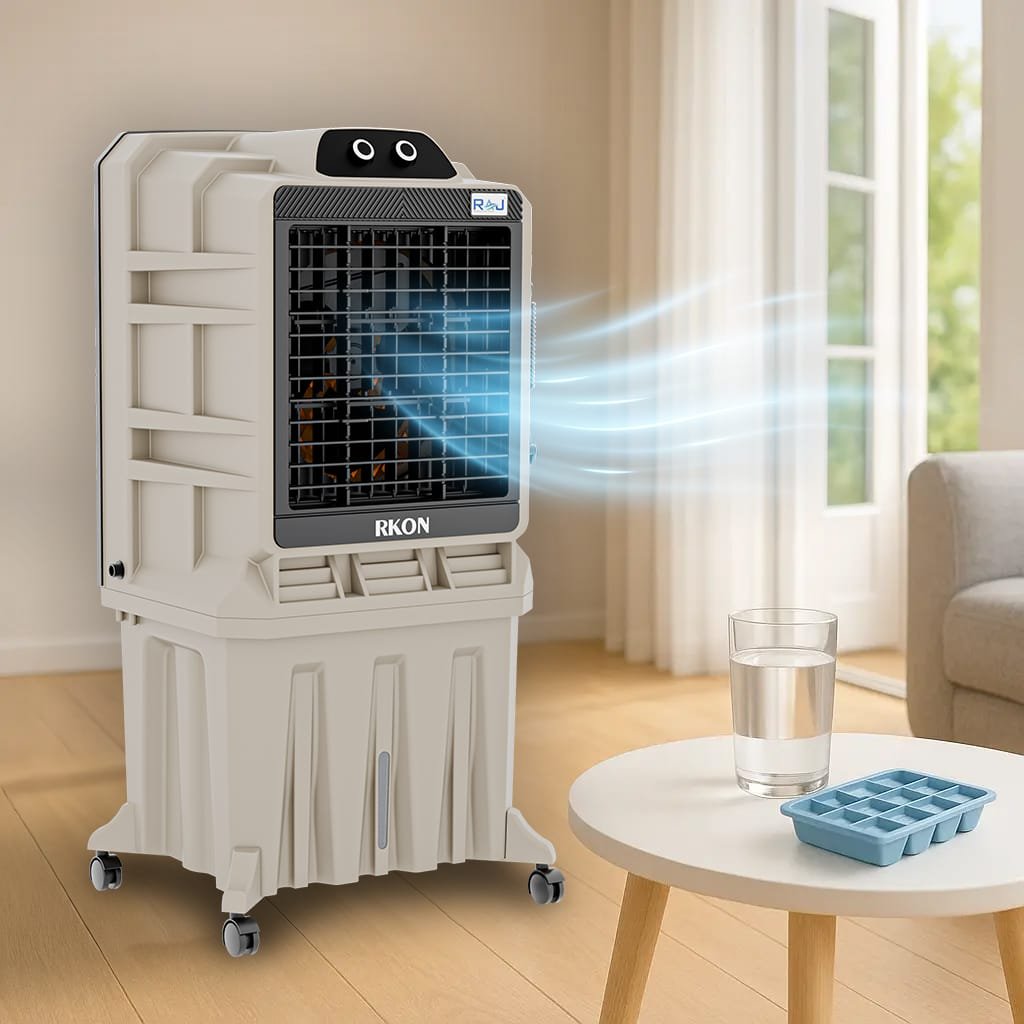Did you know that air coolers are also known as Evaporative Coolers, Swamp Coolers, or simply the eco-friendly alternative to ACs? Evaporative refers to how water absorbs heat from the air while evaporating, which lowers the air temperature. But in this article, we are talking about the air cooler without water. Because many people have a question: Can We Use an Air Cooler Without Water?
In this article, we’ll learn that we can use air coolers without water, and if so, in what situations will it be successful. Also understand the benefits and challenges we might face.
What an air cooler & How Does it Work?
An air cooler, or evaporative cooler, is a product designed to cool the air by employing water evaporation. An air cooler works on the principle of evaporative cooling. When hot air passes through water-soaked cooling pads inside the cooler, the water absorbs the heat and evaporates moist air into the room. This evaporation process absorbs heat from the air, resulting in a cooling effect that refreshes your living space.
There are multiple types of air coolers like, Domestic Coolers, Industrial Coolers, Cooling towers and Duct Coolers, All have different cooling capacities, but all depend on water to reach the cooling effect. Water is the key element in this process as it allows the heat to be absorbed from the air, lowering the temperature in the surrounding area.
The role of water is essential here. Without water, the cooler would simply blow warm air like a regular fan. The continuous supply of water to the pads ensures efficient cooling and makes the air feel fresh and comfortable.
This is where an air cooler differs from fans and air conditioners. A fan only circulates existing air without lowering its temperature, while an AC uses refrigerant gases and consumes more electricity to chill the air. In contrast, an air cooler uses natural water evaporation, making it eco-friendly and energy-efficient while still delivering effective cooling.
What Happens If You Run an Air Cooler Without Water?
Running an air cooler without water changes the way it works. Instead of providing cool air, the machine will function only as a regular fan, circulating air around the room without lowering the temperature. This makes it far less effective, especially in hot and dry climates where evaporative cooling is needed the most.
Another drawback is the risk of damage to the pump in models designed to operate with water. Without water flowing through the cooling pads, the pump may overheat or wear out faster, reducing the overall lifespan of the cooler.
while your air cooler can run without water, you’ll lose its cooling benefits and may harm the machine in the long run.
Pros & Cons of Using Air Coolers Without Water
Using an air cooler without water has both advantages and disadvantages, depending on your needs.
On the positive side, it can still be used like a regular fan in emergencies, when cooling isn’t your priority. This also helps in saving water if you only need simple air circulation instead of cooling.
However, there are some clear drawbacks. Without water, the cooler provides no actual cooling effect and only circulates air, which may not be comfortable in hot weather. The overall efficiency is reduced, and if used this way for long periods, it can even shorten the life of the machine, especially the pump.
While running an air cooler without water is possible, it’s best done occasionally and only when cooling isn’t necessary.
Alternatives & Smart Tips
If you want to make the most of your air cooler or are looking for options when water use is limited, there are a few smart tricks to try. Adding ice water or ice trays to the cooler’s tank can boost cooling and give you fresher, chilled air. For better performance, always keep cross-ventilation in the room; this helps hot air escape and allows the cooler to work more effectively.
However, if water isn’t an option at all, it’s better to use the air cooler like a fan or switch to alternatives such as standalone fans or portable air conditioners. These can provide comfort while reducing strain on the cooler.
Regular maintenance is key to ensuring your cooler runs effectively, whether you’re using water or not. Always clean the cooling pads to prevent dust and bacteria buildup, check the water pump to ensure smooth flow, and refill the tank on time to avoid running it dry. Even when using it as a fan in emergencies, avoid prolonged waterless operation, as it can reduce the cooler’s lifespan.
Conclusion
Using an air cooler without water can serve as a temporary solution, but it limits the cooler’s true potential. While it may work like a fan in emergencies and save water when cooling isn’t necessary, it cannot match the efficiency of water-based cooling. For best results, pairing your cooler with water and even ice for an extra boost ensures effective and refreshing airflow. At the same time, simple practices like ensuring proper ventilation and considering alternatives such as fans or portable ACs when water isn’t available can help you stay comfortable. In the end, the key is using your air cooler smartly so that it delivers the performance and durability you expect.

